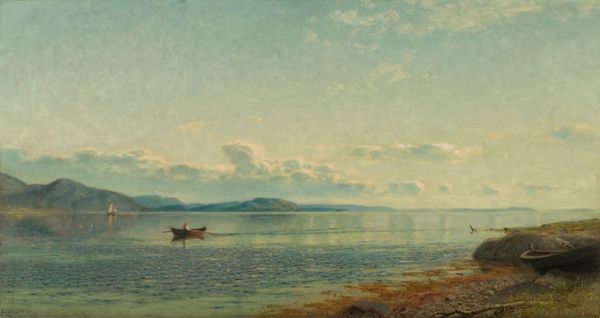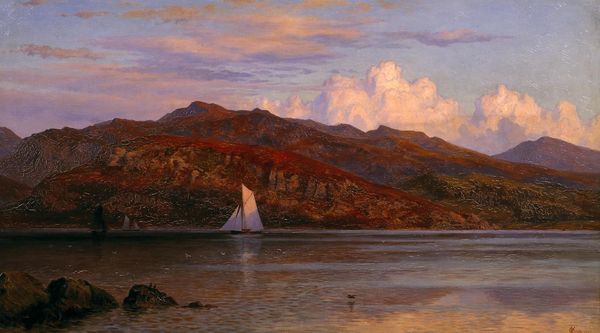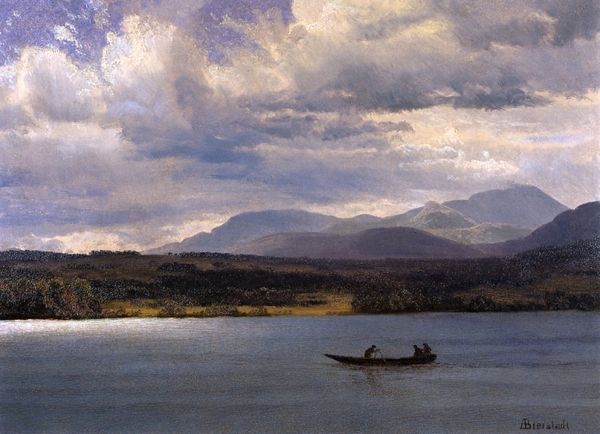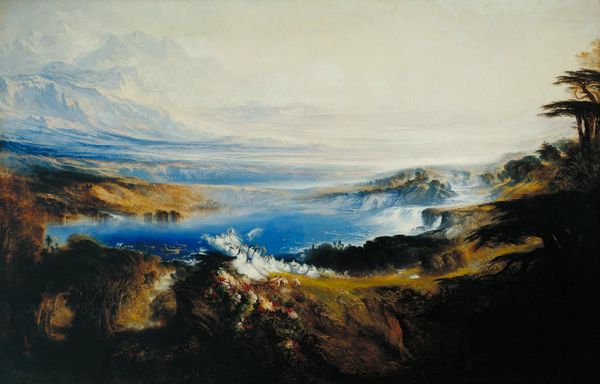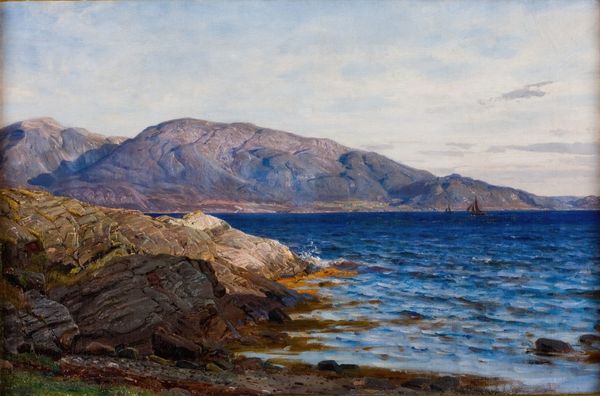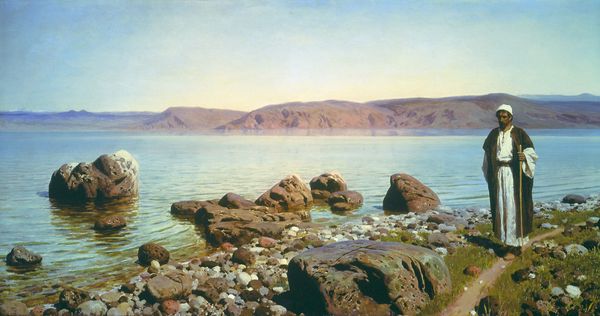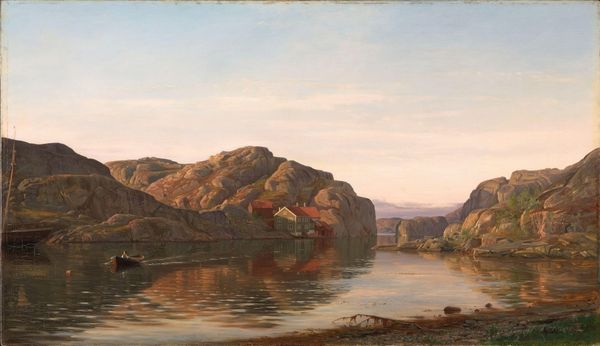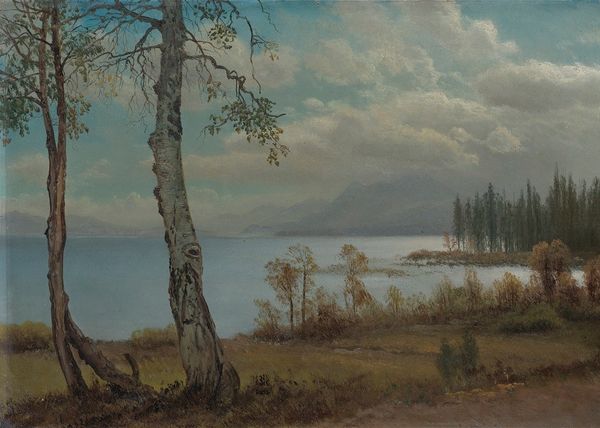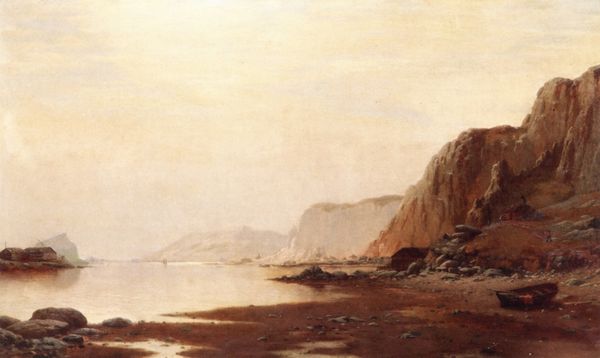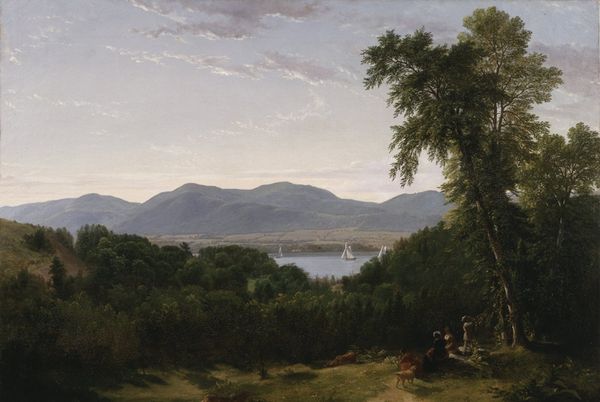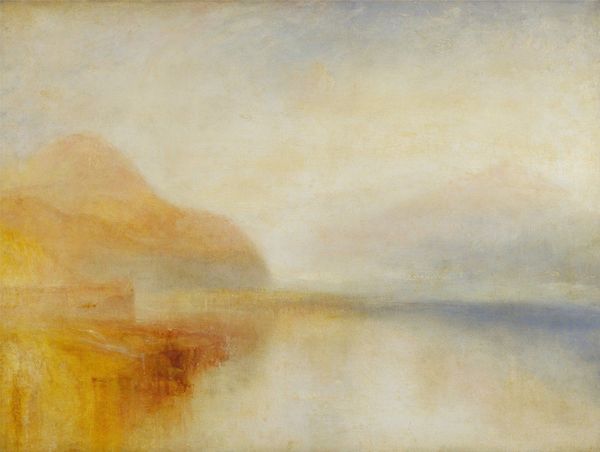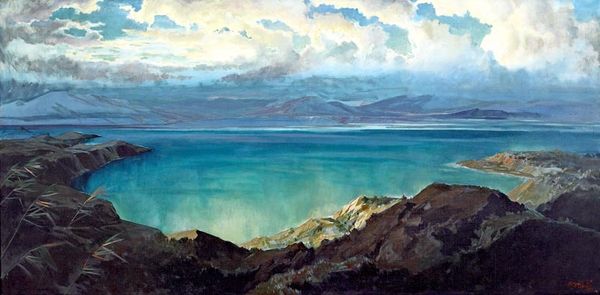
#
surveyor photography
#
wildlife photography
#
sky
#
drone photography
#
rugged
#
oil painting
#
ocean
#
landscape photography
#
sky photography
#
naturalistic tone
#
seascape
#
coastline landscape
#
water
#
sea
Dimensions: 75 x 120 cm
Copyright: Public domain
Editor: This is "Sevan," painted in 1916 by Gevorg Bashindzhagian. The materials aren't listed, but it looks like oil on canvas. It has such a still and quiet quality to it, but what catches my attention is the tension between the very dark water and the brighter sky. What can you tell me about this piece? Curator: The quietness you perceive is interesting, particularly considering the context. Bashindzhagian painted this just after the Armenian Genocide began in 1915. Knowing that, does the serene landscape take on a different meaning for you? Does it perhaps become a space of longing, of irretrievable loss? Editor: Oh, wow. That completely changes how I see it. The single sailboat in the distance—it feels incredibly lonely now. Curator: Exactly. Consider the role of landscape in national identity, especially for diasporic communities. How might painting a landscape like this, so clearly Armenian, function as an act of cultural preservation, a subtle resistance against erasure? Editor: So, even though it seems apolitical on the surface, it’s actually a deeply political statement? Curator: Precisely. And what about the dark water contrasting with the bright sky? Think about the dichotomy—oppression and hope, despair and resilience. Does that reading resonate with you? Editor: It does. It’s almost like he's showing the simultaneous existence of both realities. The painting isn’t just beautiful; it’s a testament to a people’s enduring spirit. Curator: Yes, and by focusing on the landscape, Bashindzhagian connects personal trauma with collective memory. It pushes us to reflect on how art can bear witness to historical events and shape our understanding of identity. Editor: I never would have looked at this painting that way without that historical context. Curator: That’s the power of art history. It provides us with lenses to critically engage with visual culture and uncover the multilayered narratives embedded within.
Comments
No comments
Be the first to comment and join the conversation on the ultimate creative platform.
